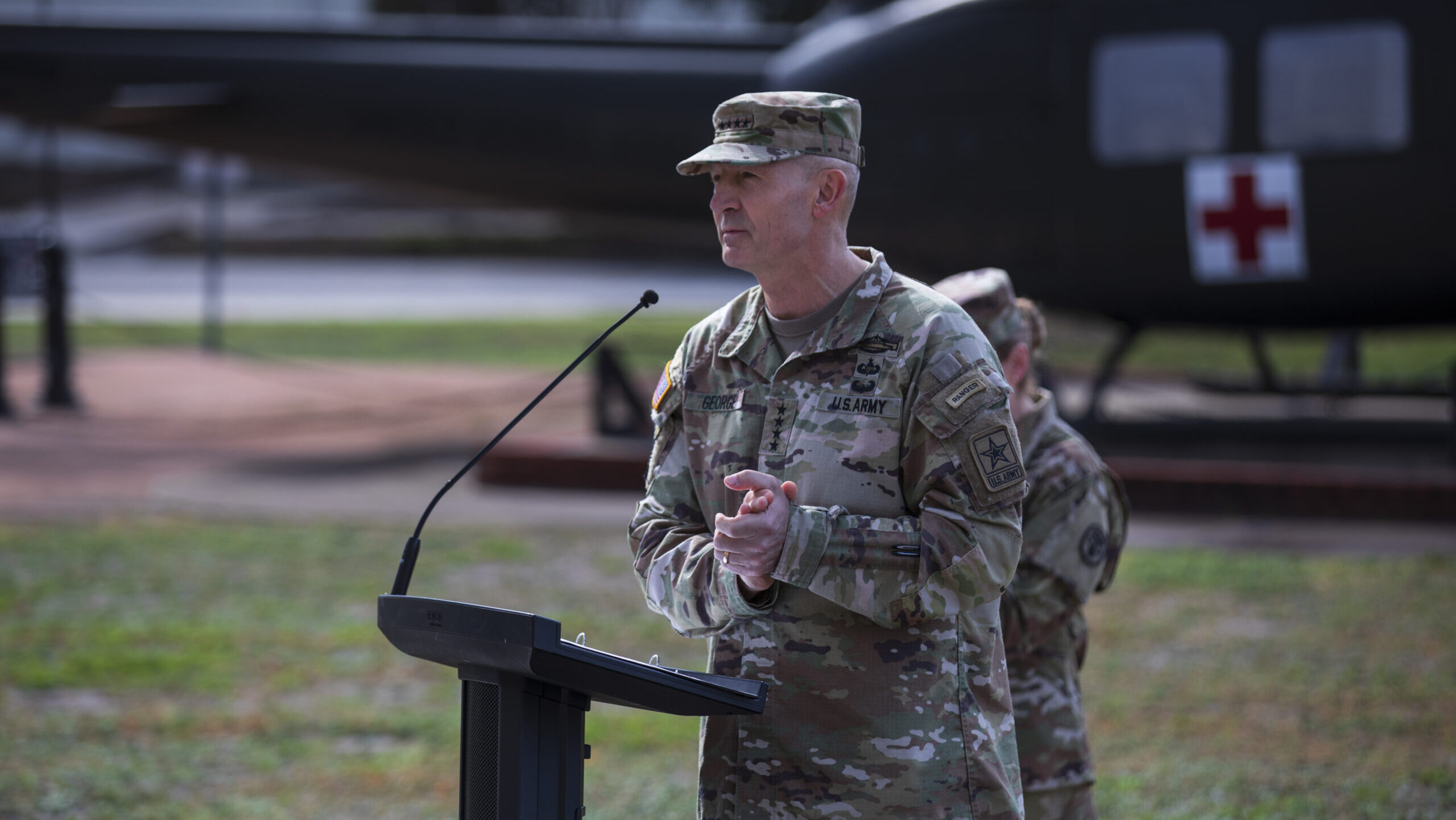John Ferrari

On Tuesday, following on the Army’s recent decision to terminate the Future Attack Reconnaissance Aircraft, the new Army Chief of Staff, Gen. Randy George, along with Secretary of the Army Christine Wormuth, made a second hard call that affects the whole service in cutting force structure.
The cuts are designed to solve a problem: the Army had “spaces” for 494,000 soldiers but coming into this year only has the authority from Congress to have 445,000 “faces,” which represents a 10 percent hollowness of the force.
To cut thousands of positions was a tough call but the right one to make and shows that the new Army chief and the secretary are forming a cohesive and productive working relationship to address the myriad of problems for the Army. Along with the FARA decision, which I also supported in these pages, it’s evidence that Army leadership is focused on preparing the force for war in this decade. They are investing money, equipment, and structure to do this, and America’s adversaries should take notice.
The Army has traditionally not wanted to cut structure, causing it to historically generate unready troops from Task Force Smith, to the famous hollow force of the 1970s, to the March to Baghdad in 2003. There is a belief in the Army that once structure is cut, it becomes a self-fulfilling prophesy that it cannot be formed back when needed.
The Army leadership team should be praised for creating new units suited for drone warfare. The recent deaths in Jordan showed how unprepared the Army had become. These new units, with names such as Multi-Domain Task Forces, Indirect Fire Protection Capabilities, Counter-UAS, and Short-Range Air Defense show that the Army is willing and capable of pivoting to the threat that exists today. That the Army is investing in them by cutting cavalry squadrons, weapons units, and positions within security force assistance units is the right call from a military operations perspective because it reverses misapplied lessons learned from the 1990 Gulf War. Gone are the days where combat maneuver forces can operate without threat from rockets and drones. This is a very large first step in correcting this operational and tactical shortcoming that has been decades in the making.
These structure cuts, however, are but probably the first round of several rounds of cuts that the Army needs to make. The net reduction only closes about 50 percent of the hollowness gap, leaving the Army with another 25,000 cuts in structure needed to align with its 445,000 actual soldiers.
It is highly likely that these additional cuts will require the elimination of entire brigades, from security force brigades to ground and aviation brigades. This will take time and negotiations within the Pentagon.
In its press release, the Army references investments it is making in transforming its recruiting force. Some have already proven successful, such as the Future Soldier Prep Course, while others remain speculative, such as aiming to recruit beyond the high school market. To recruit those with some college experience, the Army is likely going to have to significantly increase the pay for the junior enlisted force — a bill that the Army, within its current topline of funding cannot afford.
Even working in concert with Wormuth, George cannot change the Army by himself and his partnership with the Army Secretary is a great first start. However, it will take concerted efforts by the Pentagon leadership, the White House, and the Congress to make the Army ready for war by 2027. From the Pentagon, the Army needs to not be viewed as the billpayer for other programs such as nuclear modernization, space or shipbuilding. Additionally, the Army has to be released from the strictures of the divest-to-invest policy, enabling the Army to reduce spending on science and technology, as well as cut additional programs in development in order to immediately procure upgrades for existing weapons and munitions.
From the administration, the Army, and for that matter the rest of the military departments, should not be held to the one percent topline increase for fiscal year 2025 as my colleague Mackenzie Eaglen so adequately explains. Despite that funding level being approved within the Fiscal Responsibility Act, the president can and should submit the defense budget that a minimum covers inflation and the pay raise, which is probably about a five percent increase. At one percent, the Army only gets weaker and less ready.
Lastly, the Congress has yet to approve the 2024 budget or the emergency supplemental. With six months gone, the delay in funding is directly leading to munitions not being produced, construction projects not starting, and weapons production being stunted. Together, as Elaine McCusker, the former Acting Comptroller describes, every day of delay makes our military weaker and our adversaries know this.
In the next few weeks, George will have an opportunity to provide his posture statement to the Congress, where he has promised to provide his best professional military judgement, even if it is not aligned with the administration’s position.
Previous military leaders have testified that their budgets were sufficient. With war raging in Europe, the Middle East, and an aggressive China in the Pacific, each of the new members of the Joint Chiefs should take this time before the Congress to lay out their case. There is only one chance to make a first impression and they should look at these ten questions as a guide.
No comments:
Post a Comment